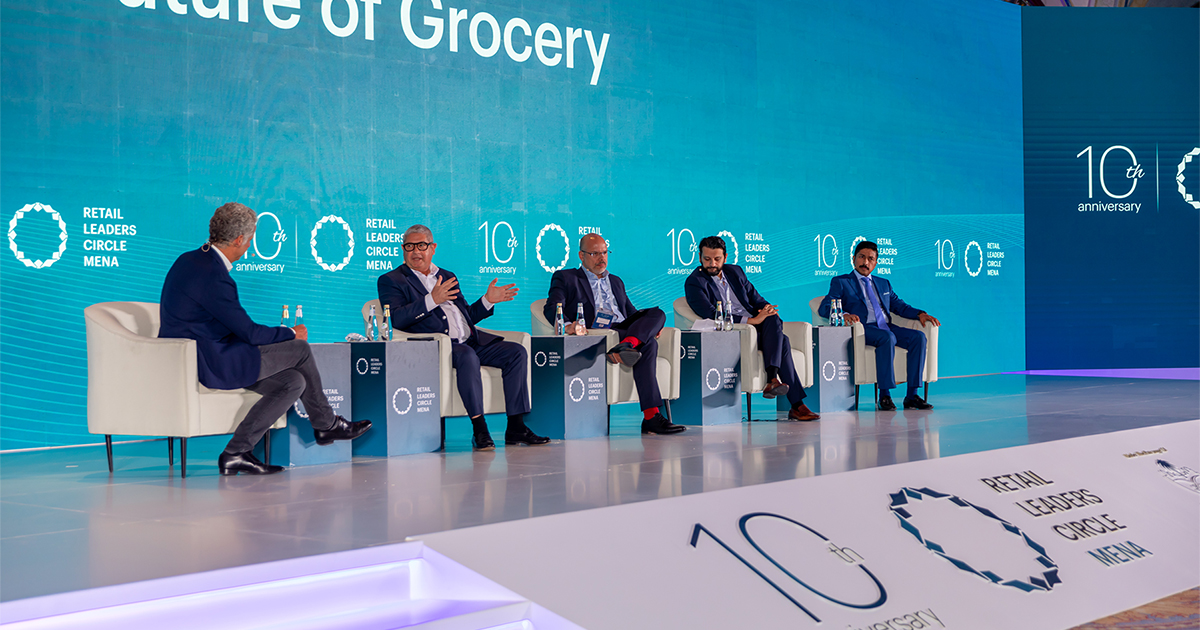In the rapidly evolving grocery retail sector, marked by an 8% growth with top listed grocery retailers seeing their sales jump from 26 to 28 billion, the future landscape is being reshaped by several key trends and innovations. This growth, double the overall market rate of 4%, coupled with maintained margins at 2.5%, underscores the sector’s robust performance and adaptability.
Shehim Mohammed, Director, Head of KSA, Lulu Group, Frederic Levy-Perrault, CEO, Al Raya Supermarkets, Adriano Araujo, President, APAC & MEA, Ocado Group, Bassel Elshaboury , Vice President Africa & Head of Marketing High Growth Markets, HENKEL and discuss with Cyrille Fabre, Senior Partner, Bain &Company Middle East the evolution of this dynamic sector.
Consumer Demographics and Preferences
The demographic landscape is undergoing significant transformation, with changes in family structures, a decrease in fertility rates, and an increase in the population above 65 years old projected to reach 20%. Women’s empowerment and the rise in unmarried households, now fivefold since 1990, are also pivotal shifts influencing consumer behaviors. These evolving demographics necessitate a sophisticated approach to consumer segmentation, incorporating generational, psychographic, and income dimensions to effectively cater to diverse consumer groups.
Consumer Behavior Shifts
Amidst inflation and the rise of alternative entertainment options, consumers are increasingly prioritizing value, leading to trends such as down-trading and channel shifting. The pursuit of value is driving consumers towards no-name items or discount stores, illustrating the need for retailers to either enhance in-store experiences or prioritize convenience.
E-Grocery Evolution
Despite e-grocery currently representing a smaller fraction of the grocery ecosystem, with about 5,000 deliveries a day against 110,000 physical transactions in stores, its potential for growth is significant. Challenges like last-mile delivery inefficiencies and high operational costs are being addressed through technological solutions and innovative operational models. Centralizing volumes through customer fulfillment centers and employing automation can reduce labor costs from 74 to 15 minutes for a 50-item basket, highlighting the path to profitability in e-grocery.
Technological Innovations
Technological advancements, particularly in automation and data analytics, play a critical role in streamlining e-grocery operations and enhancing overall efficiency.
 Making money in grocery is very hard. Making money in online grocery is even harder. What we have seen is you can do that in two ways: One, by centralizing huge volumes through central customer fulfillment centers and two, by using extensive technology.
Making money in grocery is very hard. Making money in online grocery is even harder. What we have seen is you can do that in two ways: One, by centralizing huge volumes through central customer fulfillment centers and two, by using extensive technology.





